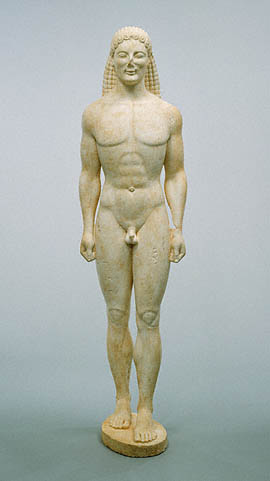
Here's another piece that doesn't
appear in your Stokstad text due to problems of provenance. This
is the "Getty Kouros," an important (and very expensive...maybe
$9 million) 1983 purchase of the Getty Museum in Mailbu, California.
But, as even the
Getty now acknowledges on its website, it may be a 20th century
forgery. Its doubters have long noted that it seems to be an odd
pastiche of styles from throughout the 6th century BCE and that the
letter of authenticity that accompanied it in 1983 has been dismissed
as a forgery.

This is a very good site for a
general overview of the
very famous Parthenon on the Athenian Acropolis, complete with
sections on the sculptural decoration and on the three orders of
ancient Greek architecture, plus other nice tidbits and links.
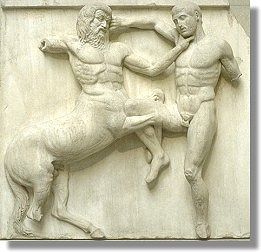
 This
story ("The Perils of Losing Your Marbles") from the BBC
discusses what the return of the marbles might mean for the future of
the British Museum and similar institutions.
This
story ("The Perils of Losing Your Marbles") from the BBC
discusses what the return of the marbles might mean for the future of
the British Museum and similar institutions.
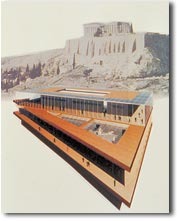
 Here's
a Greek site that urges for the return of the marbles to Athens, parthenon2004.com.
All they ask is that the British Museum make a commitment to returning
the marbles sometime soon, not necessarily before the start of the
Olympics (which didn't happen anyway), but in the future when the new and much larger
Acropolis Museum is opened at the base of the Acropolis (seen here).
Here's
a Greek site that urges for the return of the marbles to Athens, parthenon2004.com.
All they ask is that the British Museum make a commitment to returning
the marbles sometime soon, not necessarily before the start of the
Olympics (which didn't happen anyway), but in the future when the new and much larger
Acropolis Museum is opened at the base of the Acropolis (seen here).
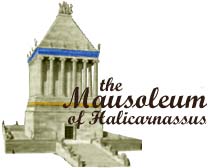
This is yet another site
dedicated to the Seven
Wonders of the Ancient World. In this case, you can click on
an interactive map to take you to each site, Of course, in the
resiliency contest, it's still the Great Pyramid 1, All Others 0.
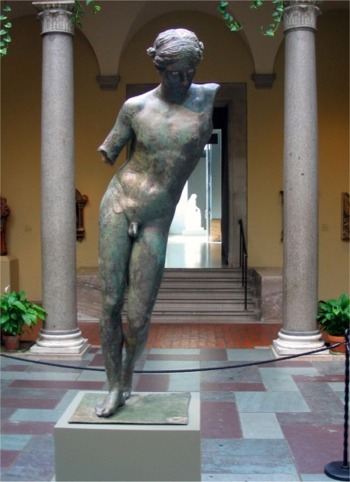
Here's a look at the new and controversial purchase
by the Cleveland Museum of Art, the Lizard Slayer or Apollo
Sauroktonos. The museum believes that it is
likely to be an original bronze by none other than Praxiteles, if so
making it the only surviving piece from his workshop [illustrations
5-59 and 5-60 are Roman copies, as Stokstad notes]. This is a
pretty well-known piece by Praxiteles and appears in many Roman
copies, complete with the tree and lizard (see
example). The controversy here is that the piece does not
have adequate provenance according to some critics, who fear that it
may be a recent forgery. The museum's defense of their purchase
can be found on
this
special page with many more pictures. There will be a
symposium in Cleveland in April of 2006, although its findings
probably won't fully satisfy everyone involved.

We didn't get around to
discussing this, but the greatest library of the
ancient world--and maybe the greatest library ever--was the
Hellenistic era library in Alexandria, Egypt (see page 169). It is long since
gone; a great fire destroyed its priceless collection if scrolls and
papyri eons ago. But, it's now back...kind of. Here's
the official site of the new $200 million library.
Understandably, a lot of money was spent on a fire
prevention system, but, eerily, it
only took five months for this one to catch on fire, too, although
the damage was limited to some administrative offices.
Also, the nature of what
this modern collection of writing should be like has been discussed for several
years now, especially since Saddam Hussein (not a First Amendment type
of guy, of course) was one of the first to give large amounts of money
for its construction, and Salmon Rushdie's works aren't likely to be
included soon, as
this story discusses.
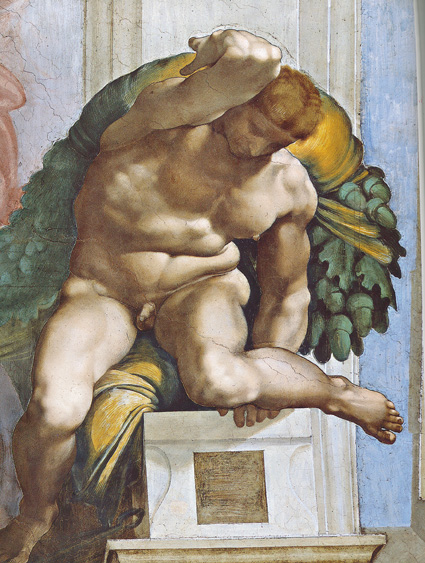
As can be seen in this detail
from the Sistine Chapel ceiling, Michelangelo was famously
influenced by the Hellenistic Greek Laoco÷n statue [5-77] and
he was even there in person when it was
unearthed in Rome in 1506, but, a new (and not widely accepted) theory
claims that Michelangelo actually forged the statue himself and then
buried it. Maybe he was there because culprits like to return to
the scene of the crime? For more on this controversy, check out
this site.
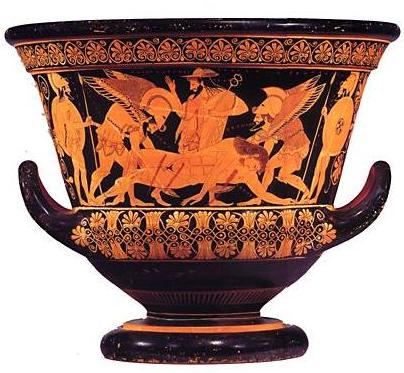
The
Tombaroli (tomb robbers) are as great a
problem in Italy today as they've ever
been. Here's a story on the ongoing
battles between the Italian government and
these lawless folks. Euphronios's Death
of Sarpedon krater [5-28] is discussed as
likely being an example of loot taken from an Etruscan tomb.
When it's mentioned, see if you can spot the
glaring error that's made! E-mail
me if you think you've found it.
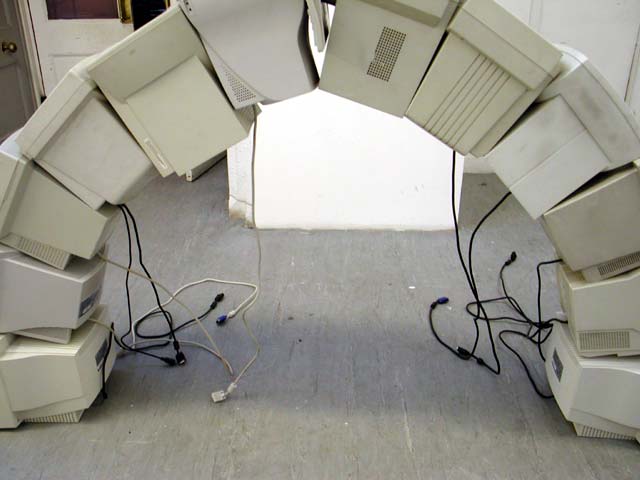
A new way to make an arch. For more on this
effort,
click here.
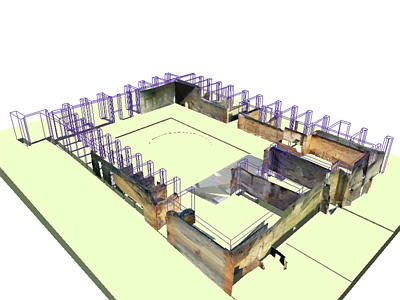
Pompeiian
Forum Project - Here's a fine example of funds
from the National Endowment for the Humanities going
to a worthy cause. Although it's mostly filled
with technical details beyond the scope of our
course, see how the University of
Virginia is using their endowment to learn more
about this important and unique site. There
are some cool VRML effects within, too.
Roman
House - This page has a useful interactive floor
plan of a typical Roman domus. Click on a room
and a description of it appears along with example
images.
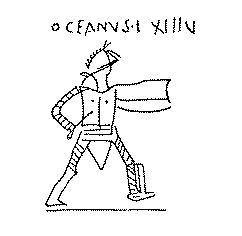
Here are
a few more examples of ephemeral
writings (a.k.a. graffiti) from
Pompeii. This site also offers some
authentic Pompeian recipies at the end of the
page.
Although,
of course, they need to be spending as much
money as possible in
preserving their site as much as possible,
it seems that some day soon, visitors at
Pompeii will be able to wear backpacks and
goggles with
special virtual-reality capabilities so
that when they stroll about the city, they can
see it digitally recreated. I'm not sure
about this, as you can trip easily enough on
the cobblestones throughout the site even when
you can look down and see what's
there.
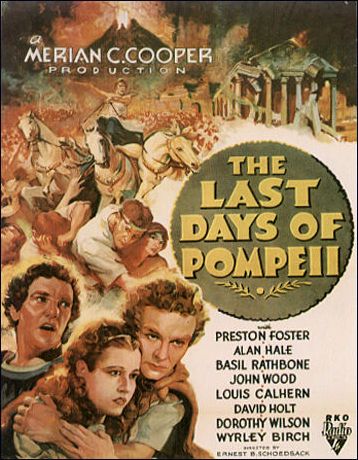
"Was he afriad?
It seems not...." Here's a link
to a
letter by Pliny the Younger that describes the
death of his famous and curious-to-the-end uncle,
Pliny the Elder, during the eruption of Mt. Vesuvius
on August 24, 79. Note that Pliny the
Younger's decision to stay at home and study wound
up saving his life...make of that what you will.

Mt.
Vesuvius - Here's all the technical data
and history one could imagine regarding this
tremendous and still quite dangerous volcano
that brought Pompeii's life to a screeching
halt over 1900 years ago. And
apparently people haven't learned from the
past. As this
recent story makes clear, far too many
people still live on the slopes of Mt.
Vesuvius, and it will erupt
again one day...in fact, it's already overdue
to do so.
Roman
Art and Architecture - This is a nice little
Roman image databank, provided by the University of
Colorado at Colorado Springs. Although you may find
this a little slow to load, you can find many images
via either a chronological breakdown or sorted by
medium (architecture / sculpture / painting). No
matter how you use it, this site should be helpful
in the recognition and application of the many terms
we are currently considering. And
there's the titanic
Perseus
Project, Tufts University's wonderful databank
of the ancient world.
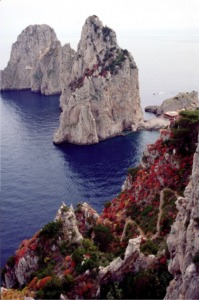
Here's
a nice site that gives you a walk-through of
Tiberius' sumptuous Villa Jovis on the awe-inspiring
Island of Capri.

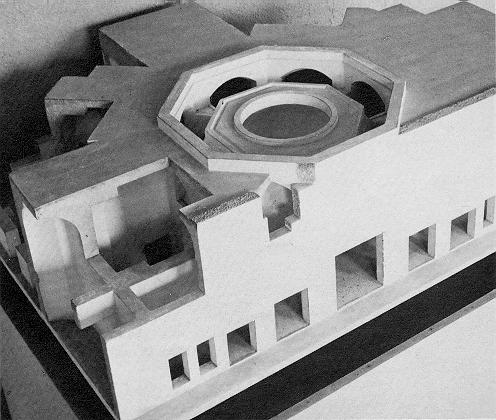
Nero's tremendous Domus
Aurea ("Golden House") in the
heart of Rome is now open to visitors once
again. Read more about it at this
official site. Unfortunately, less
than two years after it was reopened,
more damage to it occurred during the spring of
2001.

Quandiu
stabit coliseus, stabit et Roma;
Quando cadit coliseus, cadet et Roma
Quando cadet Roma, cadet et mundus.
[While stands the Colosseum, Rome shall stand;
When
falls the Colosseum, Rome shall fall
When
Rome falls the world shall fall.]
-Bede,
8th century (listen to it
here)
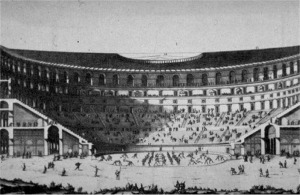
Nova's great
"Secrets of Lost Empires" series included
an episode in 1997 that tried to figure out exactly
how the ancient Romans configured and manipulated
the giant
moveable canopy for the Colosseum in Rome.
The most substantial information within this
site is in the "Questions
and Answers" section.

This
new story reminds you of two important
things. (1) There was an important Roman
presence in Scotland by the late first century CE,
and (2) Real rabbits in Scotland today almost as
damaging as the "Evil Rabbit" seen in Monty
Python's Holy Grail.
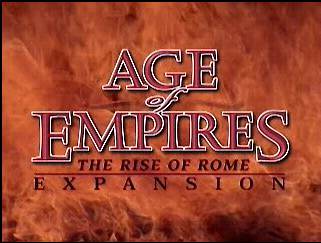
Microsoft's
Rise of Rome
-There
are several questionable statements made about
the Romans in this page put together by
Microsoft to advertise their Roman-based
game...see if you can find them.
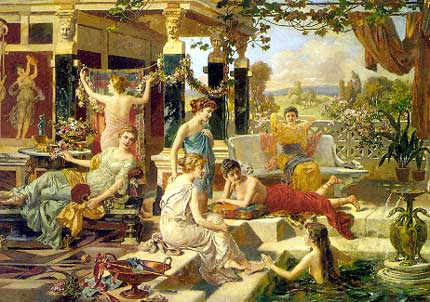
Here's another Nova
"Secrets of Lost Empires" page of
relevance, this time their Roman
Bath site, where you get lots of fun facts and
images to help you appreciate what a day at the
baths was like for a plebian Roman. Go to the
"A Day at the Baths" options for these
details, although there's a lot of other stuff
beyond that, including a discussion of Roman
Recipes, where you can learn how to make your own
tasty Lucanian Sausage.
Words of Art is faster to load, has internal links, and is divided by each letter of the alphabet. This site also has a greater emphasis on criticism and theory, although parts are still under construction.
There is also ArtLex, which is quite authoritative and includes countless internal and external links.
Perhaps your best bet is Bartleby.com, which returns hits from its dictionary, thesuarus, and encyclopedia.





















